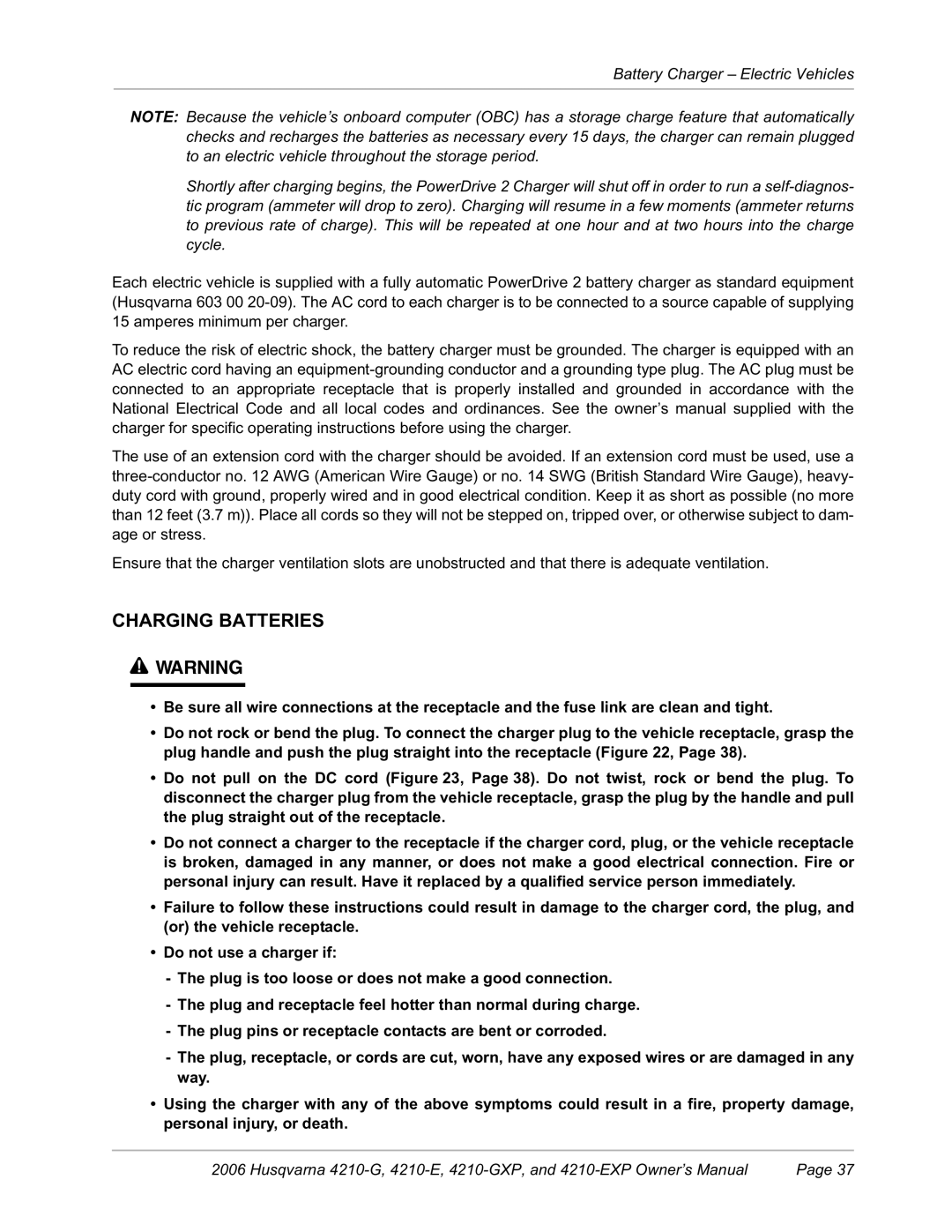
Battery Charger – Electric Vehicles
NOTE: Because the vehicle’s onboard computer (OBC) has a storage charge feature that automatically checks and recharges the batteries as necessary every 15 days, the charger can remain plugged to an electric vehicle throughout the storage period.
Shortly after charging begins, the PowerDrive 2 Charger will shut off in order to run a
Each electric vehicle is supplied with a fully automatic PowerDrive 2 battery charger as standard equipment (Husqvarna 603 00
To reduce the risk of electric shock, the battery charger must be grounded. The charger is equipped with an AC electric cord having an
The use of an extension cord with the charger should be avoided. If an extension cord must be used, use a
Ensure that the charger ventilation slots are unobstructed and that there is adequate ventilation.
CHARGING BATTERIES
ýWARNING
•Be sure all wire connections at the receptacle and the fuse link are clean and tight.
•Do not rock or bend the plug. To connect the charger plug to the vehicle receptacle, grasp the plug handle and push the plug straight into the receptacle (Figure 22, Page 38).
•Do not pull on the DC cord (Figure 23, Page 38). Do not twist, rock or bend the plug. To disconnect the charger plug from the vehicle receptacle, grasp the plug by the handle and pull the plug straight out of the receptacle.
•Do not connect a charger to the receptacle if the charger cord, plug, or the vehicle receptacle is broken, damaged in any manner, or does not make a good electrical connection. Fire or personal injury can result. Have it replaced by a qualified service person immediately.
•Failure to follow these instructions could result in damage to the charger cord, the plug, and (or) the vehicle receptacle.
•Do not use a charger if:
-The plug is too loose or does not make a good connection.
-The plug and receptacle feel hotter than normal during charge.
-The plug pins or receptacle contacts are bent or corroded.
-The plug, receptacle, or cords are cut, worn, have any exposed wires or are damaged in any way.
•Using the charger with any of the above symptoms could result in a fire, property damage, personal injury, or death.
2006 Husqvarna | Page 37 |
